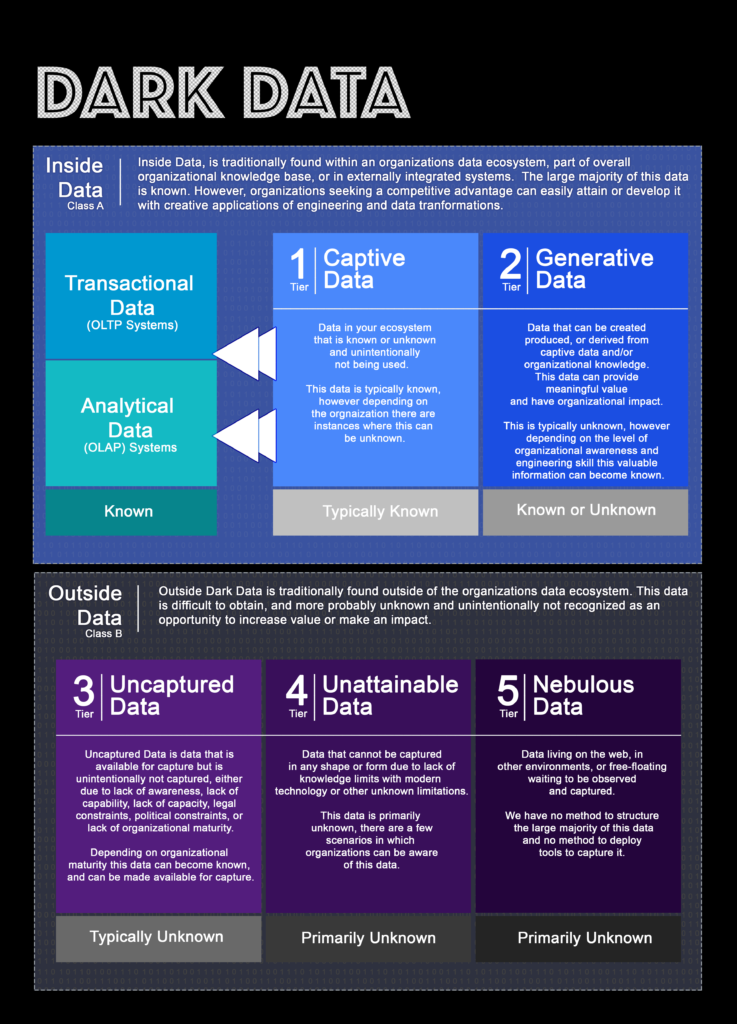Course 1 Lessons
Value-focused Definition of Unattainable Data:
Data that cannot be captured in any shape or form due to lack of knowledge limits with modern technology or other unknown limitations.
Unattainable Dark Data
This data is primarily unknown, there are very few scenarios in which organizations can be made aware of this data and collecting unattainable data is usually rather difficult. Making this data cost inefficient to use. Conversely it is possible for organizations to begin elevating their intelligence strategy by moving up the food chain and finding more ways to utilize uncaptured data. By utilizing uncaptured data in an integrative manner with their current knowledge-base an enterprise can find ways to more effectively tap into unattainable data directly. Furthermore, it is possible to expand into unattainable data in conjunction with machine learning (ML) and artificial intelligence (AI) related initiatives.
A quicker and more immediately effective approach for most organizations to gaining value from unattainable data is by using alternative data sources. If the data you need is unavailable, you may be able to find related information from other sources, and use that information referentially to derive the data needed for utilization. For example, you could look for publicly available data sets that are similar to the data you’re interested in or tangential. Pair that with data that can be used to develop insights and configure a near accurate picture of the data that was unattainable. With an approach like this you must understand that there will be a margin of error, the results won’t be fully accurate and that the conclusion you’ve made should result in directional solutions or solutions that allow you to get closer to attaining the unattainable.
Another approach is employing statistical models. You could use statistical models to infer or estimate the missing data based on other available data points. This approach requires a strong understanding of statistical methods and may not be suitable for all types for use generally, however it does allow us to dive deeper into solutioning for the unknown.
AS mentioned above AI and ML use cases are very good ways to at least get a start toward capturing this data. In recent years, technologies such as AI and ML have become increasingly more powerful. This approach may require significant expertise and resources.


